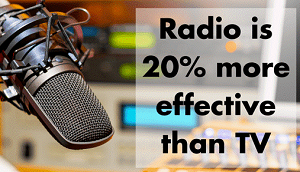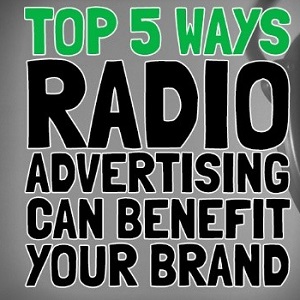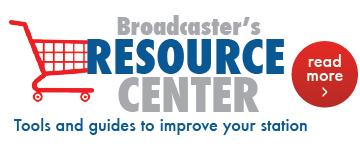There are so many reasons listeners tune in to radio stations daily, and advertisers enjoy the results of their radio marketing plans. Radio provides stability and audience continuity. Radio embraces digital via streams, apps, and podcasts, and terrestrial radio continues to be heard by nearly 90% of the US population every week. When disaster strikes a community, like Hurricane Helene, local radio is there to provide resources, information, and comfort. Radio is a cost-efficient medium to share an advertiser’s message or create brand awareness.
Local Radio is Booming
Media buyers cast a positive image of radio’s key attribute – localism. This element cannot be captured by Sirius, Pandora, Spotify, or Internet and digital stations.
Advertisers say, “It’s not overly expensive. I can directly choose the stations that target the potential consumers I want to reach.â€
Personal Connection
People consume radio differently than other media. They watch television, but they engage with radio. They connect. Localism is the one element that cannot be captured by satellite radio or streaming audio sources like Apple Music and Spotify.
Radio is driven by individual connections. Earning that first button in the car comes from loyalty and a station that attracts the local listener. It’s the ability to deliver customers for the local advertiser, even if their store is part of a national group. Your local “touch†is vital via your signal, website, app, social media, and market.
Radio is Personal
 People put station bumper stickers on their cars. Have you ever seen that for a newspaper or TV station? Radio defines what it means to be a local medium, more so than websites, newspapers, or TV.
People put station bumper stickers on their cars. Have you ever seen that for a newspaper or TV station? Radio defines what it means to be a local medium, more so than websites, newspapers, or TV.
Radio is a community medium. DJs attend fairs, street festivals, parades, and wherever crowds gather. They entertain. In many communities, radio is the only locally produced entertainment available. From this, you get bumper stickers and a sense of belonging, which defines community. Also “point of sale†advertising because so much of radio is consumed in the car.
Also, radio is social—it’s the original social medium. Radio stations bring people together and get them talking. Radio is uniquely positioned to reap major gains in local media markets’ great and protracted shakeout.
Syndication is Not Local Radio
Cutbacks and consolidation have impacted many radio stations. Media buyers complain about a decline in local on-air talent and the rise of impersonal syndicated shows and out-of-town voice-trackers.
Local radio must be reinvigorated, revived, reinvested, and “re-envisioned.â€
Reinvigorating Radio
 Broadcasters take advantage of all the benefits local radio can bring to advertisers and listeners.
Broadcasters take advantage of all the benefits local radio can bring to advertisers and listeners.
1. Radio is comparatively inexpensive. Radio CPMs are well below the cost of newspapers and primetime network TV.
2. Radio is targetable in a way that neither TV nor newspapers are. Each format comes with a unique audience.
3. Radio is easy to buy. Buyers say radio is much easier than newspapers and out-of-home media. Radio spots can be highly creative and simple to schedule.
4. Media buyers regard radio highly in terms of cost, targeting, and overall effectiveness—higher, in fact, than all other media except digital.
5. Listening to the radio allows you to multitask unlike watching television or reading a newspaper, which requires your full attention.
6. Radio looks better and better as other media becomes more fragmented.
- Listening in the car benefits the local retailer when the listener hears the commercial before they shop.
- In the old order, it was newspapers, TV, then radio, and each operated in a silo with its own sets of advertisers.
- Two things happened. First, local newspapers suffered; their revenues were slashed by more than half. Second, former readers now have access to information from search engines, apps, streams, and social media.
- That’s created opportunities for other media. Radio can only gain.
- And two, the silos are gone. Local markets are now wide open and highly competitive.
- Advertisers are sophisticated. Radio can make its case to a much larger group of advertisers.
- Local radio has greater reach than any other medium – TV, the Internet, Facebook, Instagram, and Sirius/XM.



